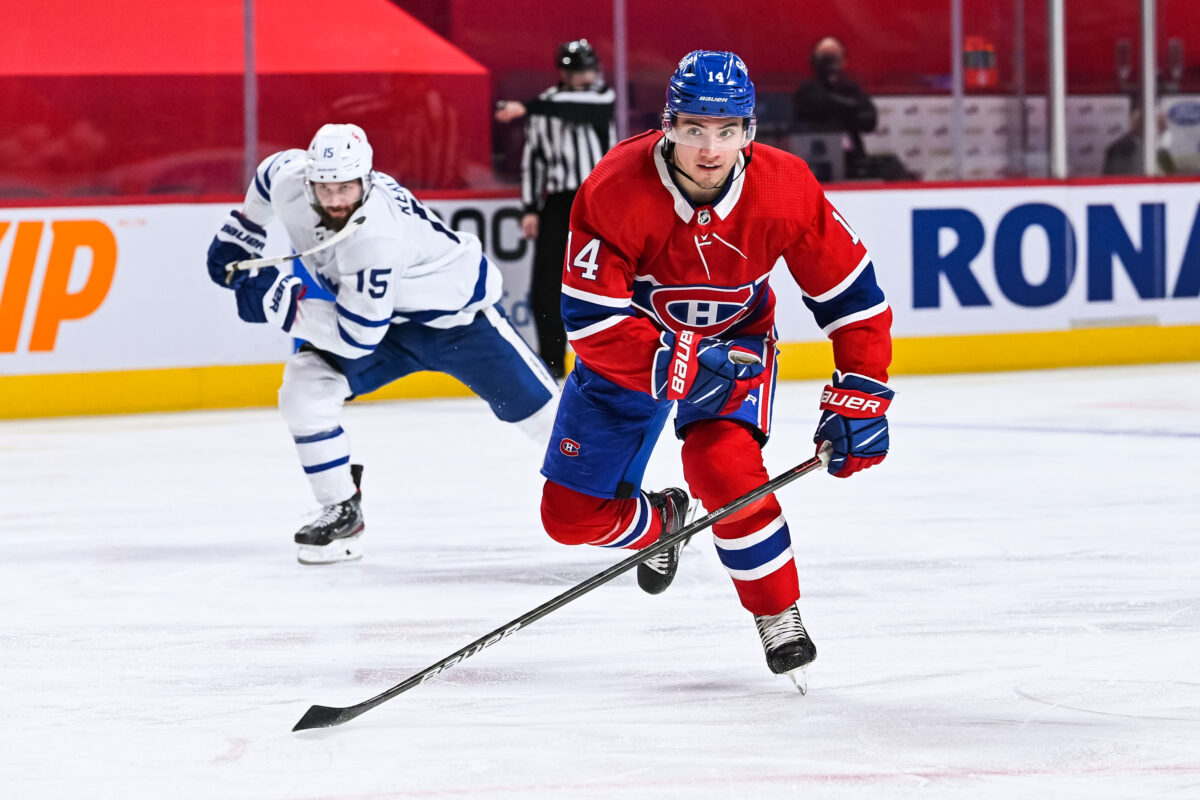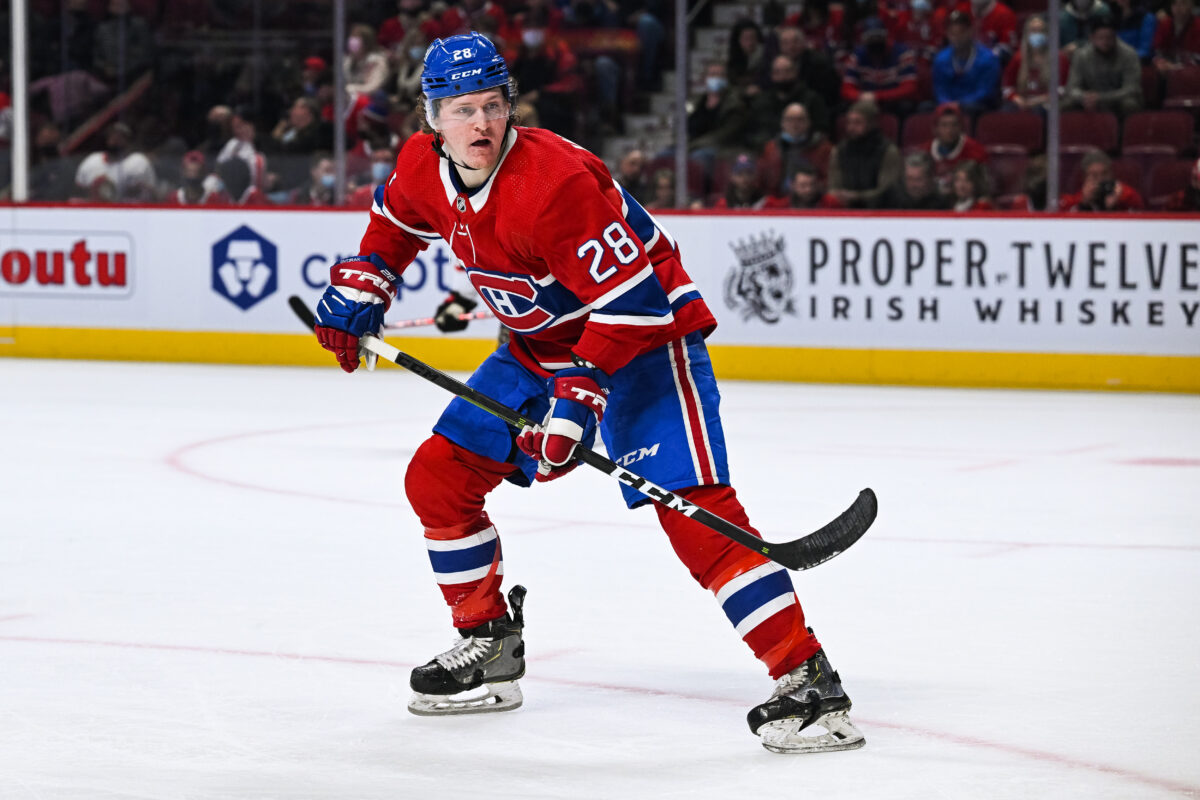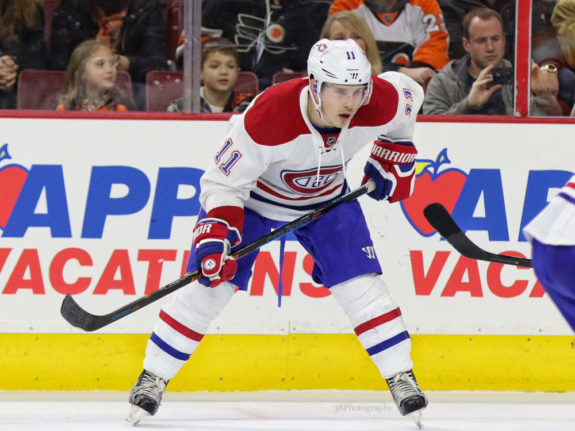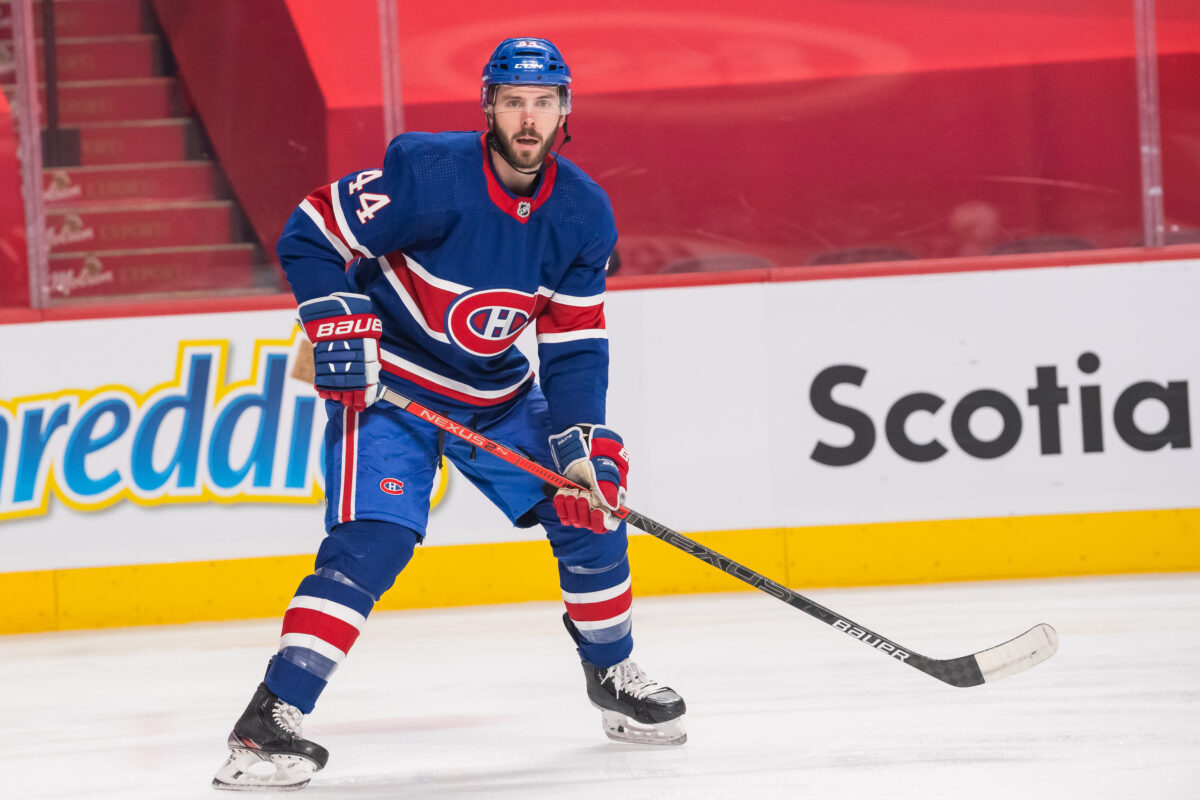The 2021-22 season has mercifully come to an end for the Montreal Canadiens and their fans. After a summer where the Canadiens made a Cinderella run, winning the Campbell Trophy as Western Conference champions to earn a berth in the Stanley Cup Final only to lose to the eventual champions, the Tampa Bay Lightning, the expectations were that the Habs would be able to compete for a playoff berth this season.
Instead, what we witnessed was a collapse of epic proportions. The Canadiens went from Cup Finalist to the worst record in the NHL, becoming the first team in NHL history to finish 32nd in the process. While injuries and COVID-19 did play a role as Montreal had the most man-games lost this season, the lack of depth and poor roster construction also hurt their chances.
With the complete upheaval in the front office, leading to Kent Hughes becoming the new general manager and the franchise creating the role of executive vice president of hockey operations so that they could hire the unilingual anglophone Jeff Gorton, and appease the provincial politics around language, there is now a new vision for the direction of the franchise. This also provides them an opportunity to learn from this season’s failures and to dissect what has gone right and wrong with the campaign, and the roster.
Canadiens Culture Shift
It’s easier to go into work when it is fun to do so, and you enjoy the company of your co-workers. As such, building a winning culture in hockey starts with simply making it fun for the players. A winning team is not always the roster with the most skill, it’s the one that can have skill, an unapproachable work-ethic and a desire to win as a team. That is why instilling a “winning” culture is important in team sports, especially hockey. It is up to the coaching staff and the team leadership (captains, assistant captains, veterans) such as Nick Suzuki, to foster an environment where there is accountability for an individual’s actions on and off the ice but also praise for even the smallest role on the team, as everyone’s efforts are needed for team success.

The historically poor start to the Canadiens’ season under former head coach Dominique Ducharme didn’t seem to provide any of those attributes. Which caused rifts in the room, so much so that Jeff Petry did something that is rarely ever done in professional hockey, he openly criticized his coach.
As a team leader and veteran, Petry’s comments were a red flag for Ducharme and his “system”. With the team free falling, a lack of on-ice structure was concerning, but the disconnect in the room was the real problem. Hughes finally saw enough and ended up letting Ducharme go, to bring in interim head coach Martin St. Louis.
St. Louis arrived and provided a fresh voice with a fresh message, and despite his lack of coaching experience, he brought instant credibility that only a Stanley Cup Champion and Hockey Hall of Fame member could bring.
By focusing on communication and simplifying the on-ice concepts, he was able to refocus the team on playing the second half of the season for pride and in the process, set a foundation for the team culture. More than anything else, the shift in vision and approach was the one move that may prove to have the most impact on the team, but mostly on individual performances going into the next season. Ensuring that he is brought back will be an important first step for Hughes.
The Canadiens ended their season with a 10-2 victory over the Presidents’ Trophy champions Florida Panthers. Yes, Florida was resting the majority of their main roster before the playoffs, but that didn’t matter to the Bell Center faithful who were provided with an entertaining show to end the season. After a long difficult season, the fans wanted something to cheer for as they got to watch Carey Price play again, see the young core produce offensively and perform well and also watch as the team scored 10 goals as if Guy Lafleur himself reached down from heaven to bless their sticks. Without a playoff, that may be the best way to end a season that was filled with so many low lights.
Canadiens’ Team Offence
St. Louis’ approach of using the concept of small area play, allowing players to read and react to plays developing and playing instinctually, did help to dramatically improve the offensive output of a team that was 31st in goals for upon his arrival with 99 goals in 45 games played. Over the time frame St. Louis has been head coach, Montreal was able to improve to 15th in goals in the NHL with 119 in 37 games played.
While the offensive style has improved, it will still need more skill players added if they hope to become competitive enough to challenge for the playoffs next season. Overall , the Canadiens finished 27th in the NHL scoring 218 goals for an average of 2.66 goals per game (GPG).
Related: Canadiens Improvement Under Martin St. Louis is no Mirage
The NHL average for goals was 250, for an average of 3.05 GPG. As shown above, St. Louis was capable of taking a group of players on a team that was rebuilding to a league average offensively, scoring an average of 3.22 GPG. Over an 82-game season, that would add up to 264 goals, which would have been enough to place them in the 10th to 15th range in NHL scoring, especially if the NHL average of goals scored remains near this year’s average of 3.05 GPG. If players like Christian Dvorak, who found their games improved under the new coach, can continue scoring at that rate next season, he could help to improve the competitiveness of a team that will be looking to play meaningful games late into next season and not be the first team eliminated from the playoffs two years in a row.

At five-on-five (5v5), the team did improve under St. Louis, playing with more intensity. The Habs played well off the rush, but their attacks were all one and done, meaning they got one shot, no rebound and the opponent would clear the zone quickly. Adding a plan for more offensive zone pressure, or a cycle game that can help further improve offensively simply by volume would add more shots on goal.
Canadiens Team Defence
Defensively, the Canadiens had a nightmare of a season, giving up at least five goals in 31 of their 82 games. Under Ducharme, the Canadiens were league-worst in goals allowed at 179, with an average of 3.79 GPG allowed. Under St. Louis, he was able to improve the defensive outcome slightly, finishing 27th over his 37-game span allowing 138 goals, averaging 3.73 GPG allowed. Despite this defensive improvement, the team was still a minus-19 in goal differential and finished far below the league average of 3.05 goals allowed.
In the meantime, the defense under St. Louis played a man-on-man style defense. This led to some confusion, as teams were able to cycle the puck and get their players shifting positions around the zone. A plan to return to zone defence may be required, as this debate will likely be the biggest portion of St. Louis’ off-season planning of new concepts for the team to implement at training camp for the 2022-23 season.
Canadiens’ Special Teams
Special teams will be the most important area to study this offseason. Finding ways to address deficiencies on the power-play (PP) and penalty-kill (PK) could have the largest overall impact on team statistics and success next season. One area that will change is the coaching staff. It is highly likely that St. Louis will bring in his own staff of assistant coaches next season, meaning that PP coach Alex Burrows and PK coach Luke Richardson are unlikely to return.
Power Play
Overall, the Canadiens PP was horrendously inept, finishing 31st with a success rate of 13.7%, which means that over 246 power plays, they found the twine only 33 times. With a team that has difficulty scoring, a potent PP can play a key role in helping them become more competitive, not only from game to game, but over the entirety of the season.
The season started with a PP scoring at a 13.6% rate. Under St. Louis, it improved slightly to 13.8%. The league average for the PP was 21.2%, which means that over 246 PP opportunities, that would provide 52 goals, 19 more than what the Canadiens had scored. While that doesn’t seem significant, when added to the overall scoring, the Habs would have finished at 20th in the NHL with 237 goals and could hand them as many as seven more wins on the season from just improving their PP to being only average.
With a new coach in charge of the PP, we will see a new approach to how the team employs concepts and players. Most teams still use the 1-3-1 system, placing one player on the point, one player along the goal line, such as Brendan Gallagher, usually used to get a screen in front of the goaltender, and three players in a straight line spread across the center of the offensive zone. This plan allows for more puck movement along the perimeter, and with skilled players, that movement can cause openings in the defensive structure, giving players more scoring opportunities.

For the Canadiens, player deployment will be a major factor as well. Using players to their strengths, such as when St. Louis placed Cole Caufield on the top PP unit, on his off-wing in a position to shoot a one-timer. This one move alone was significant. Even though it was done only in the second half of the season, it led to him scoring five PP goals and eight PP assists, making him a party to 39% of all the offence from the PP. Finding solutions to options for a point shot, if it is a forward or a defender with a heavy shot, and finding someone for the bumper position (the middle player of the three across) capable of a quick release shot, would all guarantee more PP goals. Also, any coach brought in to lead the PP will need to be adaptable and change the system from time to time to keep defenses guessing and unable to adjust.
Penalty Kill
Like the PP, the PK will most likely have a new coach at the helm next season who will need to find solutions to adding more aggressive puck pursuit, meaning the PK unit gives far less time and space to opponents to set up in the Habs zone and generate shots. While that sounds simple, it’s far from easy to implement. If they can find a way to improve, however, it would play a major role in improving the team’s overall defensive play.
Over the entire season, the Canadiens had 273 power plays against (PPA). One major step to helping the PK is a 5v5 system that doesn’t lead to as many penalties. Getting closer to the league average of 235 (PPA) would be an important first step in lowering the goals against but also to take the stress of the added minutes played by a key penalty killer like Joel Edmundson and for the other players on the PK units.

Over the 273 PPA, the Habs had a 75.8% success rate, allowing 66 goals against. Under St. Louis, the PK was at 78.5%, with the same PPA rate, this would mean 58 goals allowed over the season, that alone is an improvement of eight fewer goals against. If they can improve to the league average PK success rate of 79.5%, the goals allowed falls to 55. Coupled with a more disciplined style at 5v5 would make dramatic improvements to the team’s overall defensive output.
Despite all of the issues the Canadiens had over the season, it isn’t a stretch to see a path to getting the franchise to be capable of becoming an average team in the NHL. For a team in a rebuild, this is the next logical step in a plan to return to contention. There will need to be changes in staff and roster construction, but it is a standard that is plausible to see the Canadiens meet next season based on what they learned from seeing the dramatically improved play after St. Louis’ arrival.
A full offseason allowing the players to physically recover from the last 12 months of hockey, and to train more intensely for next season also will help the roster take a step ahead. Add in a more disciplined team, a new coaching staff to deploy players in more advantageous situations among several necessary improvements to get to the league average at 5v5 and on special teams, would go a long way in making the Canadiens not only competitive but also capable of competing for a playoff spot until late in the season. All of that would help in taking the next step in the rebuilding plan that Hughes is trying to implement.